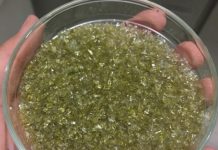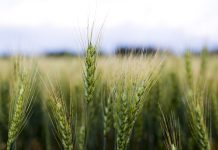A new study has revealed a new approach to help the US meet its Net Zero target by 2050; this new innovative solution involves weathering (EW) through agriculture
This method involves adding crushed basalt, a type of rock, to soil in agricultural areas to capture carbon dioxide (CO2) from the atmosphere.
The study revealed that implementing EW on U.S. farmlands could remove an estimated 160 to 300 million metric tons of CO2 annually by 2050, potentially reaching 250 to 490 million tons by 2070. This could account for up to 30% of the U.S. carbon removal needed to achieve its net-zero target.
The study, led by experts at the Leverhulme Centre for Climate Change Mitigation at the University of Sheffield, is the first detailed analysis of EW’s potential and costs in the U.S. over the next 50 years.
Contributing to the fight against climate change
The research shows how this natural process involving weathering silicate minerals like basalt could significantly contribute to the fight against climate change.
Enhanced weathering works by speeding up the natural process of mineral weathering, which absorbs CO2 from the atmosphere and locks it away in soils.
When basalt is ground up and spread on farmland, it chemically reacts with CO2 in the air and forms stable carbonates, effectively storing the carbon in the soil.
This effectively sequesters carbon and takes advantage of the existing agricultural infrastructure already in place across the U.S.
The benefits on enhanced weathering
Enhanced weathering is relatively low cost compared to other carbon removal strategies like direct air capture (DAC) or bioenergy with carbon capture and storage (BECCS).
The costs of implementing EW are expected to be highest in the first two decades but are projected to drop to around $150 per ton of CO2 by 2050. This makes EW a competitive and cost-effective carbon dioxide removal (CDR) solution.
The study also found that EW could provide unexpected environmental benefits. As basalt is added to the soil, it interacts with nitrogen cycling processes, potentially lowering harmful air pollutants like ground-level ozone and fine particulate matter.
These pollutants can harm both human health and crop productivity. By reducing their formation, EW could help the climate and improve air quality in agricultural regions, creating a cleaner environment for both people and the ecosystems they depend on.
Despite its promising potential, the development of enhanced weathering does come with its challenges. For one, scaling up this process across the U.S. will take time.
Mobilizing the necessary infrastructure and ensuring sufficient basalt will require decades of planning and investment. There are still critical knowledge gaps about the long-term impacts of large-scale EW implementation. More research is needed to understand the full potential of this technology, particularly in terms of its environmental impact and effectiveness over time.
While the basalt mining operations necessary for EW could create jobs and boost local economies, ensuring these activities are done responsibly is crucial. Community concerns about the environmental and social impacts of basalt mining must be addressed, and fair practices should be a top priority as the industry expands.
The study concludes that while EW cannot replace efforts to reduce emissions directly, it offers a practical and scalable approach to complement other carbon reduction strategies. By embracing this innovative method, the U.S. could significantly enhance its efforts to combat climate change and reach its net-zero emissions goal by 2050.











